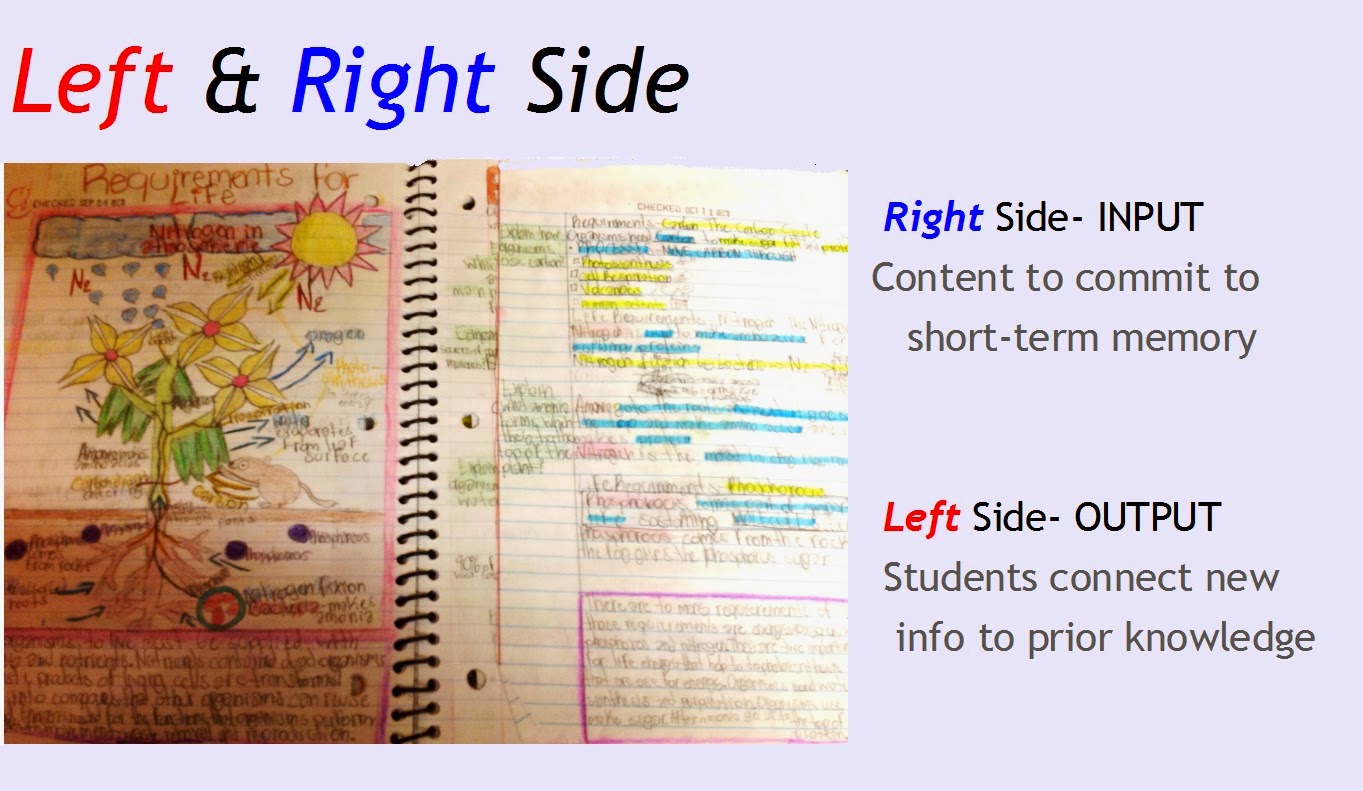Since that's the case, it's critical to your success that you learn what is expected with your Notes, and begin immediately to develop the habits that will lead to success.
Interactive Notebooks in this Biology course will:
- have a TABLE OF CONTENTS maintained by the student:
- employ specific COLORS to identify specific items or activities:
- typically work with two pages open simultaneously; the right side (INPUTS) will contain your actual Notes and other items given by your instructor, while the left side (OUTPUTS) will contain YOUR individual and thoughtful responses to whatever 'input' is on the facing page:
- Graded with this NOTEBOOK RUBRIC:










